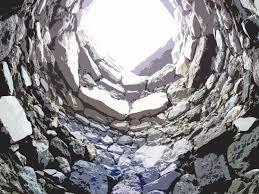The Second Census: The New Generation of Hope
26: 1-65

The transition between Chapters 25 and 26 reminds us of the transition from Chapter 14 to Chapter 15, for in both of them, ADONAI moved from judgment to mercy, from punishment to promise. At Kadesh-barnea and at Ba’al Peor, Isra’el had sinned greatly and God disciplined them, but in His grace He forgave their disobedience and gave them a new start (to a summary of Numbers 26 click here). Ezra, the teacher of Isra’el, expressed this truth in his prayer of confession when he said: Our God, You have punished us less than our sins deserve (Ezra 9:13). David felt the same way when he wrote: He does not treat us as our sins deserve or repay us according to our iniquities (Psalm 103:10).568
Forty years after the census that began the book of Numbers (to see link click Ai – The First Census: The Old Generation of Rebellion), it was time to recount the fighting men. The conquest was about to begin! The men twenty-years-old and up were to be numbered as part of the preparation for crossing the Jordan and conquering the Promised Land. However, the numbers were not just for military information. The land of Isra’el was to be divided among the tribes according to population indicated by the census results. The land is to be allotted to them as an inheritance based on the number of names. To a larger group give a larger inheritance, and to a smaller group a smaller one; each is to receive its inheritance according to the number of those listed (26:53-54). The Torah tells us that among the men numbered, not a single one from the first census remained: But there was not a man among them who had also been included in the census of Moshe and Aaron the High Priest when they enumerated the people of Isra’el in the Sinai Desert (26:64).
By comparing the census numbers with those of the previous census, we see that the overall population didn’t drop significantly. Seven out of the twelve tribes actually increase in size. But those population gains were offset by the dramatic drop in the size of the tribe of Simeon. The Simeoniets decreased by 37,000, a 62 percent drop in population. Strangely, the Torah does offer any explanation. Traditional thought suggests that the 24,000 that died in the Ba’al Peor incident (see Ea – Taking a Stand for God) were all Simeonites. After all, Zimri was from the tribe of Simeon.
Perhaps the diminishing of the tribe of Simeon was connected to Jacob’s prophecy (see the commentary on Genesis Lf – Simeon and Levi are Brothers, Their Swords are Weapons of Violence). In that passage, Jacob said of Simeon and Levi, “I will disperse them in Jacob, and scatter them in Isra’el.” The allotment of the Levites had already been determined. They were to function, scattered throughout the tribes of Isra’el. The Simeonites, on the other hand, found themselves facing a different type of dispersion and scattering. Their dwindling population was a result of assimilation into the territories of all the other tribes, but primarily into Judah.569 The teaching on each tribe follows a basic outline containing three parts. They are (1): The First Census in the past, (2) The Second Census in the present, and (3) The Messianic Kingdom in the future.



Leave A Comment